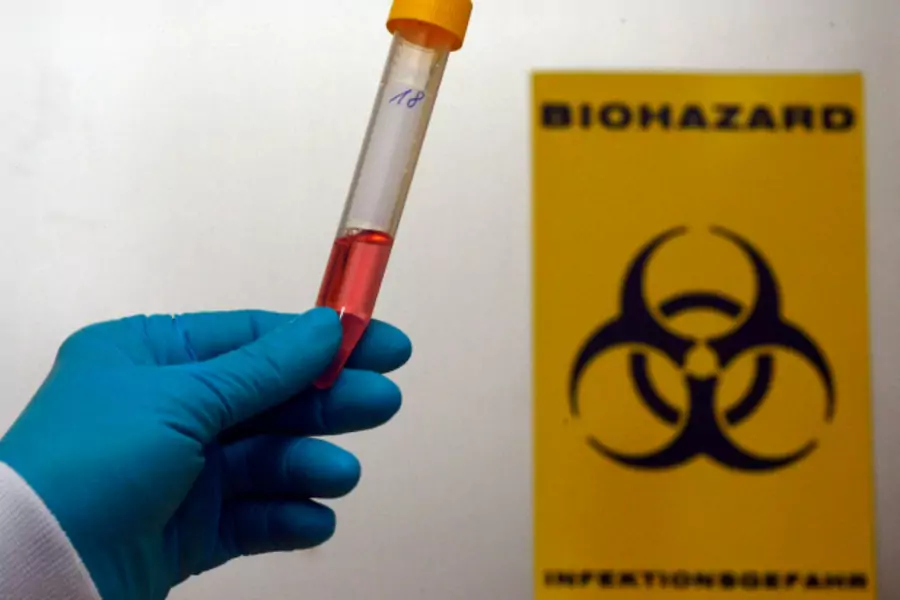Guest Post: The Unknown Limits of Synthetic Biology

More on:
Helia Ighani is a research associate in the Center for Preventive Action at the Council on Foreign Relations.
Since 2001, major metropolitan cities have increasingly conducted gas and chemical attack simulations in subway systems. Police departments carry out these exercises with odorless, colorless, and non-toxic gases to determine how to evacuate passengers in the event of an actual biological or chemical attack, and identify safeguards that could be implemented to prevent potentially catastrophic consequences.
Demands for these simulations are based on real ambitions by terrorist groups to acquire biological and chemical weapons. Most recently, a laptop belonging to a member of ISIS (the Islamic State of Iraq and Syria) was found to contain instructions in Arabic on how to develop biological weapons and weaponize the bubonic plague from infected animals. The nineteen-page document suggested using “small grenades with the virus and throw them in closed areas like metros, soccer stadiums, or entertainment centers.” While these terrorist groups may not yet be capable of carrying out such sophisticated attacks, these types of weapons are definitely on their radar. Al-Qaeda has also attempted to develop chemical weapons, even before the 9/11 attacks, and the United States has regularly made efforts to stunt its progress.
This is a valid concern for U.S. policymakers, but also for scientists and researchers working to advance the field of synthetic biology. In synthetic biology, engineers tinker with the DNA of existing biological systems, either by isolating, replicating, or adding pieces of DNA. A new Center for Prevention Action discussion paper by Gigi Kwik Gronvall, “Mitigating the Risks of Synthetic Biology,” looks at the possible outcomes of advancing synthetic biology research.
The origins of synthetic biology date back to the beginning of the 20th century. In 1912, French biologist Stéphane Leduc demonstrated that he wanted to enable man “by directing the physical forces which are its cause” to synthetize lifeforms and enhance the way the world understands science. Nearly a century later, Craig Venter revolutionized the field by sequencing the human genome. The field has rapidly advanced over the last decade. It is a growing industry with labs all over the world. Some estimate that the synthetic biology industry market will jump from $1.6 billion in 2011 to as high as $16 billion by 2018. However, this growth also brings a host of possible risks and benefits.
The greatest risk to U.S. national security is bioterrorism and the deliberate misuse of synthetic biology. For example, as foreign fighters with scientific and medical know-how flock to join the ranks of ISIS and other terrorist groups, they could return to their home countries and carry out an attack on the West.
The prevalence of do-it-yourself (DIY) bio labs is also increasing, with regard to scientific development and research. One of these amateur bio labs has produced seeds for glow-in-the-dark plants, which were sold to more than eight thousand people via a Kickstarter campaign. But since these labs are unregulated, they could also easily be used to recreate harmful pathogens (such as the Ebola virus or influenza). Moreover, there is no all-comprehensive reporting system for biological accidents that occur in unofficial and official bio labs.
On the other hand, the advancement of synthetic biology could produce many humanitarian and ecological benefits. It has been used for the development of an antimalarial drug in endemic regions in Africa. Synthetic biology could open the way to more innovation, including possible cures to world hunger, cancer, and environmental degradation.
The United States is currently the lead funder of synthetic biology research and innovation. In 2010, over half a dozen U.S. government agencies had pledged funding for synthetic biology research, spending over $430 million on research since 2005. There are many benefits to the development of synthetic biology, but a lack of regulation or oversight could produce disastrous results. Over sixty staff members were unintentionally exposed to anthrax in June 2014 at the Centers for Disease Control and Prevention, where national regulation and oversight are a priority.
Read the discussion paper, “Mitigating the Risks of Synthetic Biology,” to learn more about the potential risks and benefits of synthetic biology, possible ways to prevent or mitigate a catastrophe, and U.S. policy recommendations for domestic and international partners.
More on:
 Online Store
Online Store